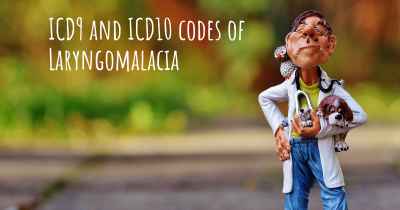Is it advisable to do exercise when affected by Laryngomalacia? Which activities would you suggest and how intense should they be?
See if it is advisable for people with Laryngomalacia to practice sports and which ones are the most recommended if you have Laryngomalacia

Exercise and Laryngomalacia: What You Need to Know
Laryngomalacia is a condition that affects the larynx, or voice box, in infants. It is characterized by the partial collapse of the laryngeal structures during breathing, leading to noisy breathing or stridor. While exercise is generally beneficial for overall health and well-being, it is important to consider the specific needs and limitations of individuals with laryngomalacia.
Consult with a Healthcare Professional
If you or your child has been diagnosed with laryngomalacia, it is crucial to consult with a healthcare professional before starting any exercise regimen. They will be able to provide personalized advice based on the severity of the condition and any other underlying health issues.
Low-Impact Activities
Engaging in low-impact activities can be beneficial for individuals with laryngomalacia. These activities are less strenuous and put less strain on the respiratory system. Some suitable options include:
- Walking: Walking is a low-impact exercise that can be easily adjusted to individual fitness levels. It helps improve cardiovascular health without putting excessive strain on the respiratory system.
- Swimming: Swimming is a great option as it provides a full-body workout while minimizing the impact on the joints. The buoyancy of water also helps support the body, making it easier to breathe.
- Cycling: Cycling is a low-impact exercise that can be done indoors or outdoors. It helps improve cardiovascular fitness and leg strength without putting excessive strain on the respiratory system.
- Yoga: Yoga focuses on gentle movements, stretching, and breathing exercises. It can help improve flexibility, balance, and relaxation, while being mindful of any respiratory limitations.
Intensity and Duration
The intensity and duration of exercise should be tailored to the individual's capabilities and comfort level. It is important to start slowly and gradually increase the intensity as tolerated. Listening to the body and avoiding overexertion is crucial.
For individuals with laryngomalacia, it is recommended to exercise at a moderate intensity level. This means working hard enough to increase heart rate and breathing, but still being able to carry on a conversation comfortably. High-intensity exercises that cause excessive breathlessness or strain on the respiratory system should be avoided.
The duration of exercise sessions can vary depending on the individual's fitness level and tolerance. Starting with shorter sessions, such as 10-15 minutes, and gradually increasing the duration to 30 minutes or more, can be a good approach. However, it is important to listen to the body and take breaks as needed.
Considerations and Precautions
While exercise can be beneficial for individuals with laryngomalacia, it is important to keep a few considerations and precautions in mind:
- Stay Hydrated: Proper hydration is essential during exercise, especially for individuals with respiratory conditions. Drinking enough water before, during, and after exercise helps maintain optimal respiratory function.
- Monitor Breathing: Pay attention to any changes in breathing patterns or increased difficulty in breathing during exercise. If breathing becomes significantly labored or uncomfortable, it is important to stop and seek medical attention if necessary.
- Avoid Triggering Factors: Certain environmental factors, such as cold air or allergens, can exacerbate respiratory symptoms. It is important to exercise in a controlled environment and take necessary precautions to minimize exposure to triggers.
- Supervision: If the individual with laryngomalacia is a child, it is important to have adult supervision during exercise to ensure safety and provide assistance if needed.
Remember, every individual with laryngomalacia is unique, and what works for one person may not work for another. It is crucial to consult with a healthcare professional and listen to your body to determine the most suitable exercise routine.








